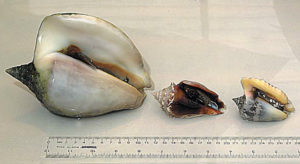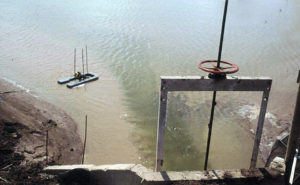
Commercialization of modified fish and shellfish poses issues
Although controversial, the potential benefits of genetically modified fish and shellfish can yet be realized, while minimizing risks to human health and the environment.
The pH of shrimp pond water is influenced by source water, pH and acidity of bottom soil, shrimp culture inputs and biological activity.

Although controversial, the potential benefits of genetically modified fish and shellfish can yet be realized, while minimizing risks to human health and the environment.

Recirculation systems not only limit environmental impact but can produce several species at once with minimal space requirements.

Family shrimp farms are common in Southeast Asia, where costs of living are low and revenue from one or two small ponds can support a family.

The history of how aquaculture's connection to the National Pollution Discharge Elimination System of the Clean Water Act is an interesting topic.

The queen conch (Strombus gigas) is a large marine gastropod that has supported subsistence and commercial fisheries in these areas for centuries.

Appropriate site selection, design and management are fundamental factors that contribute to the success or failure of a shrimp farm.

GAA's Responsible Aquaculture Program requires shrimp farmers to install certain practices, keep records on activities and satisfy effluent water quality standards.

Natural waters have a very complex chemical composition and may contain almost any substance found in the atmosphere, in the Earth’s crust, or in living organisms.

Archer Daniels Midland's hydroponics and aquaculture project utilizes waste heat and carbon dioxide to produce high-quality vegetables and tilapia on a year-round basis.

Settling basins seem to be the only practical means of treating effluents released during harvest at small or large shrimp farms.

Recirculating systems for commercial scale farming of shrimp have been tried in several areas of Thailand over the past five years.

This paper reports on the use of a constructed saltwater wetland system to treat effluent from a pilot facility consisting of four 2-ha ponds.

Shrimp pond systems equipped with dissolved oxygen, temperature and aerator amp-draw sensors now provide reliable pondside automation to growers.

Bio-Cord is a biofilter media developed for management of drainage into oceans, rivers, lakes and marshes to prevent water pollution through sedimentation.

The design and operation of biofilters is multidisciplinary, involving mechanical engineering, microbial ecology and aquaculture husbandry.